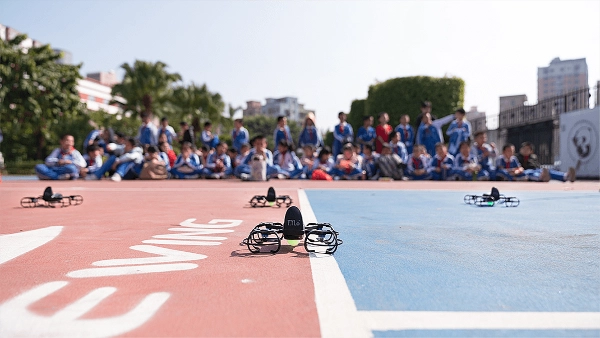Advantages of Drones for Educational Use
Drones, also known as unmanned aerial vehicles (UAVs), are becoming more and more popular and versatile as technology continues to advance, providing numerous benefits to educational institutions and students. In this blog post, HighGreat will share with you the advantages of drones for educational use for sale, from enhancing the learning experience to helping students prepare for the future workforce.
Introduction to Drones in Education
Drones are not just toys for hobbyists; they are powerful educational tools that can transform the way students learn and interact with the world around them. With their ability to capture aerial imagery, perform data collection, and simulate real-world scenarios, drones offer a unique perspective that can enrich the educational experience.
1. Enhancing STEM Education
STEM (Science, Technology, Engineering, and Mathematics) education is at the forefront of modern education, and drones are a perfect fit for this interdisciplinary approach. Drones can be used to teach principles of physics, aerodynamics, and engineering design. Students can learn about the forces acting on a drone, how to design and build their own drones, and even program them to perform specific tasks.
2. Developing Practical Skills
Drones provide hands-on learning opportunities that are difficult to replicate with traditional classroom methods. Building, programming, and flying drones require students to apply theoretical knowledge in a practical setting. This not only deepens their understanding but also develops problem-solving skills, critical thinking, and teamwork.
3. Encouraging Innovation and Creativity
The open-ended nature of drone technology encourages students to think creatively and innovatively. Whether it's designing a drone for a specific purpose or using drones to capture unique perspectives in photography and videography, students are encouraged to explore new ideas and push the boundaries of what's possible.
4. Real-World Applications
Educational drones can be used to simulate real-world scenarios, providing students with a practical understanding of how drones are used in various industries. From agriculture and environmental monitoring to search and rescue operations, students can gain insights into the applications of drones and how they can be leveraged to solve real-world problems.

5. Preparing for the Future Workforce
As drones become more prevalent in various industries, there is a growing demand for professionals who understand drone technology. By incorporating drones into the curriculum, educational institutions are preparing students for future careers in drone technology, robotics, and related fields.
6. Cost-Effectiveness
Compared to other educational tools and equipment, drones can be a cost-effective way to provide students with cutting-edge technology. Many educational drones are affordable and can be used for a wide range of applications, making them an excellent investment for schools and universities.
7. Accessibility and Inclusivity
Drones can be used to create an inclusive learning environment. For students with physical disabilities, drones can provide a means to participate in activities that may otherwise be inaccessible. Moreover, the use of drones can help to bridge the digital divide, providing students from all backgrounds with access to advanced technology.
8. Environmental Education
Drones can be a powerful tool for environmental education. They can be used to monitor wildlife, assess the health of ecosystems, and track changes in the environment over time. This can help students to understand the importance of conservation and the impact of human activities on the natural world.

9. Data Collection and Analysis
Drones are excellent for collecting data in areas that are difficult to access or dangerous for humans. Students can use drones to gather data on various topics, such as weather patterns, geological formations, or urban planning. This data can then be analyzed to draw conclusions and make informed decisions.
10. Enhancing Remote Learning
In the era of remote learning, drones can provide students with a unique way to connect with their learning environment. They can be used to capture footage of school grounds, laboratories, or other educational facilities, allowing remote students to feel more connected to their school community.
11. Competitive Edge in Education
Schools that incorporate drones into their curriculum can gain a competitive edge by offering cutting-edge educational experiences. This can attract students who are interested in technology and innovation, and it can also help to improve the school's reputation as a forward-thinking institution.
12. Research Opportunities
Drones provide a platform for students to conduct research in various fields. They can be used to collect data for scientific studies, conduct surveys in remote areas, or even assist in archaeological digs. This can provide students with valuable research experience and contribute to the body of knowledge in their chosen field.
Conclusion
The integration of drones into education offers a myriad of benefits that can enhance the learning experience, develop practical skills, and prepare students for the future. As drone technology continues to evolve, its potential applications in education will only grow, making it an exciting and valuable addition to the educational landscape.

 Telephone No.Email
Telephone No.EmailMailbox number:marketing@hg-fly.com



